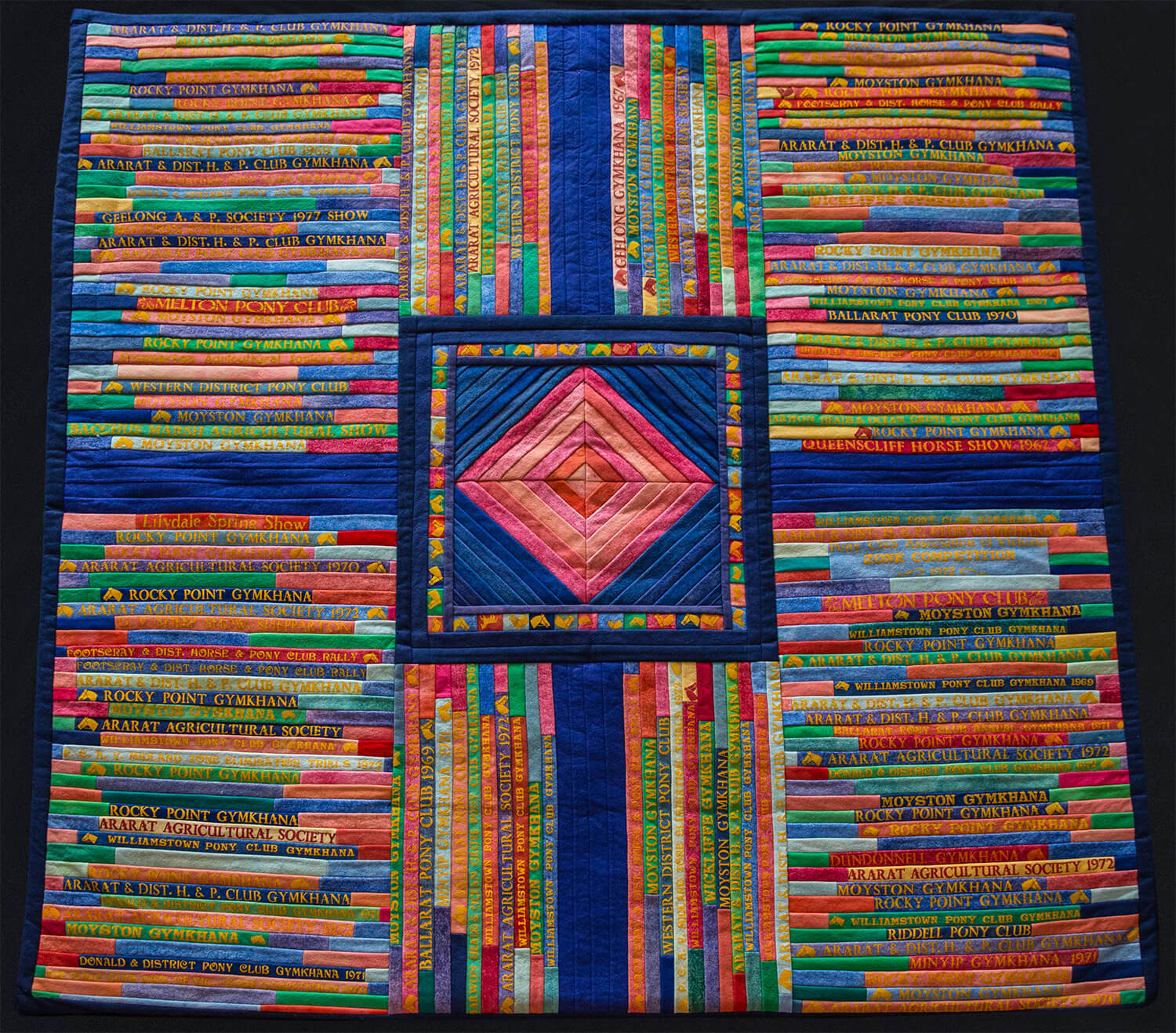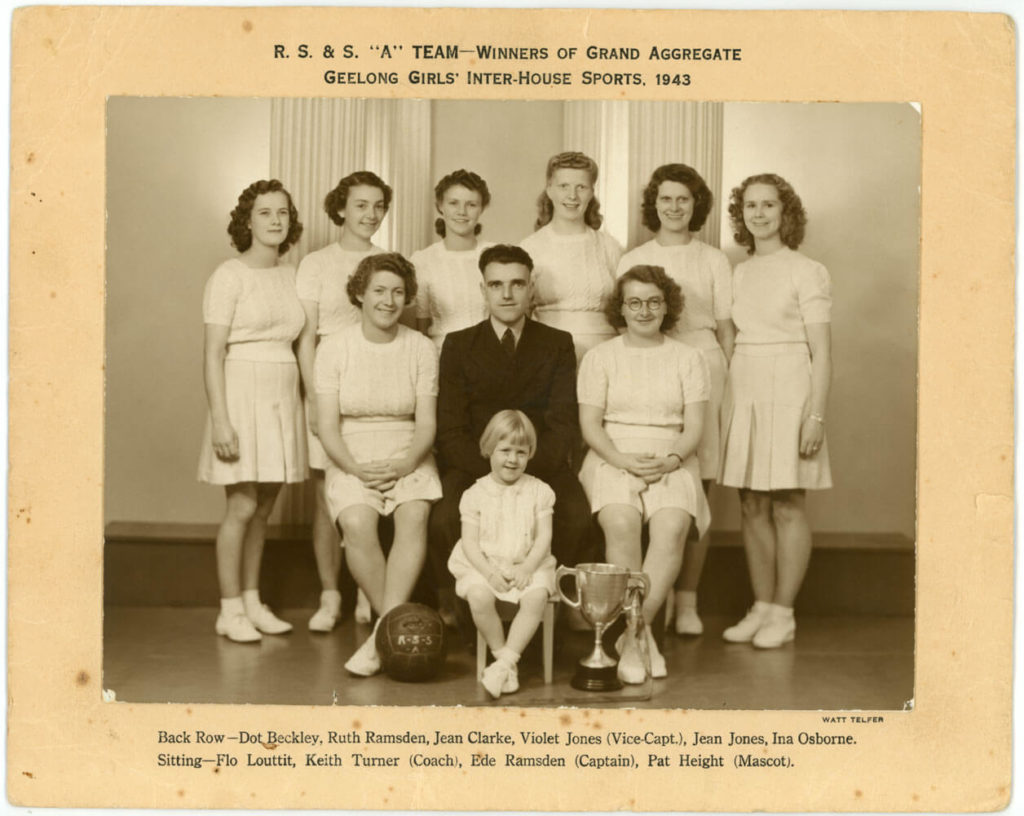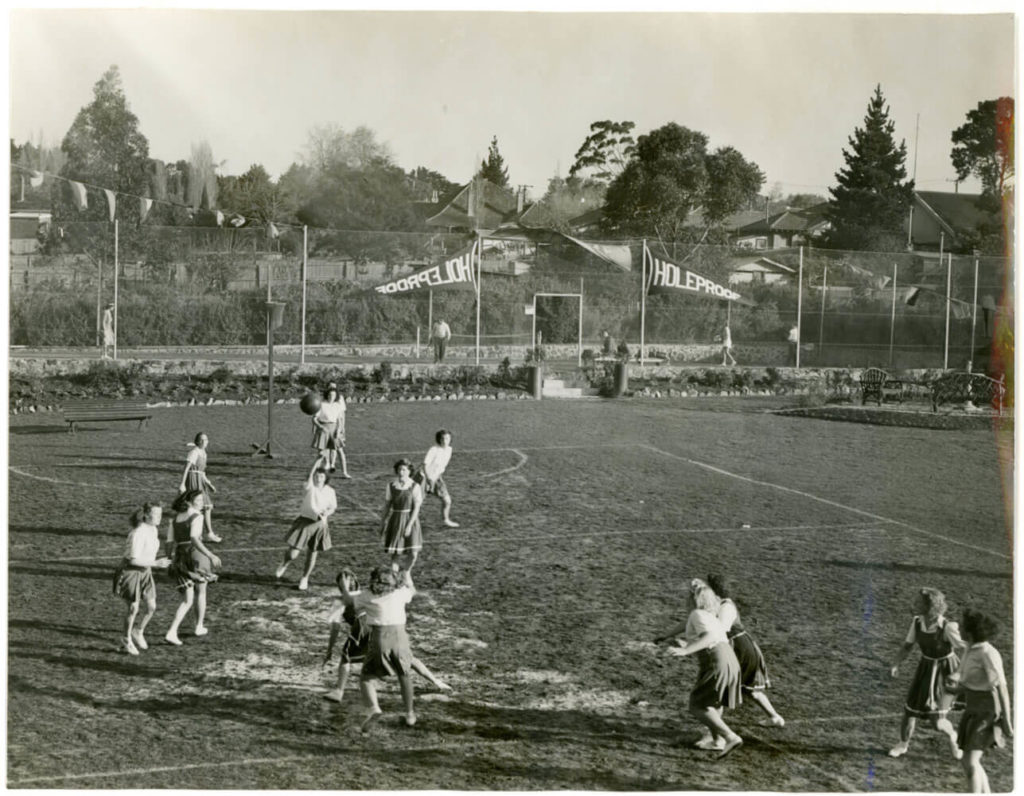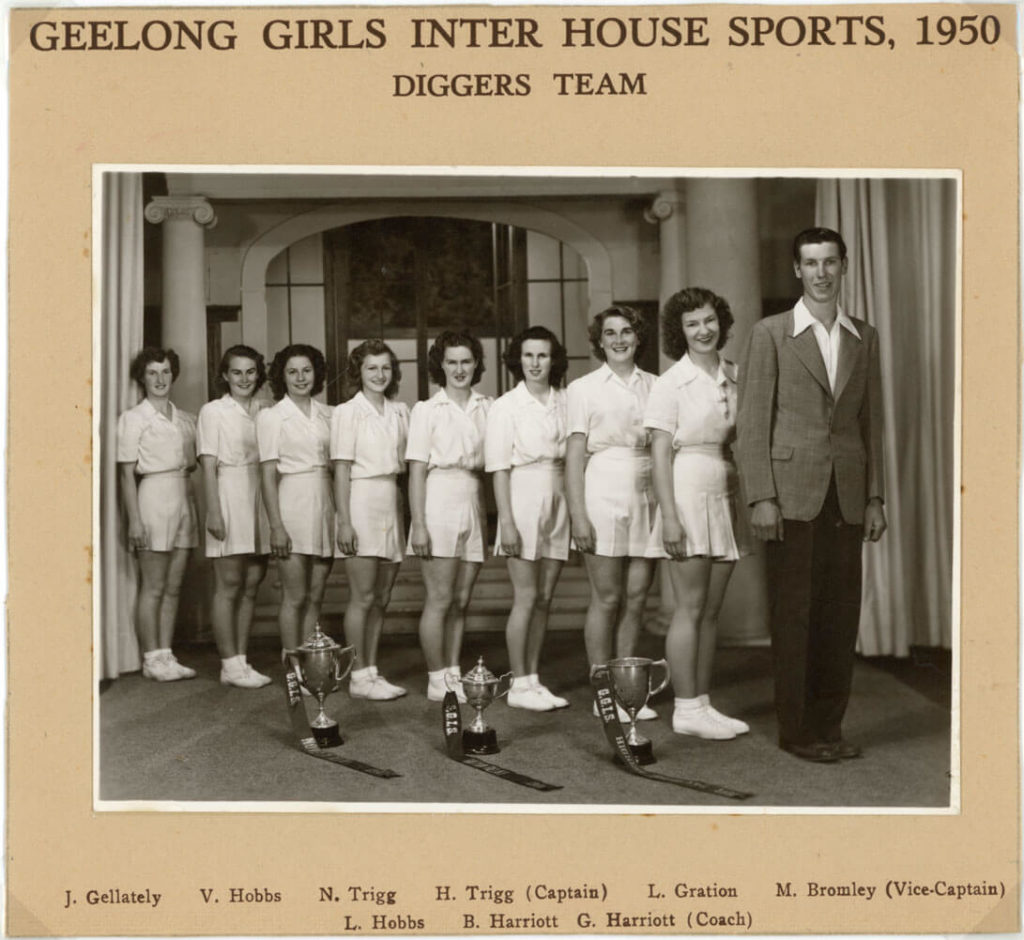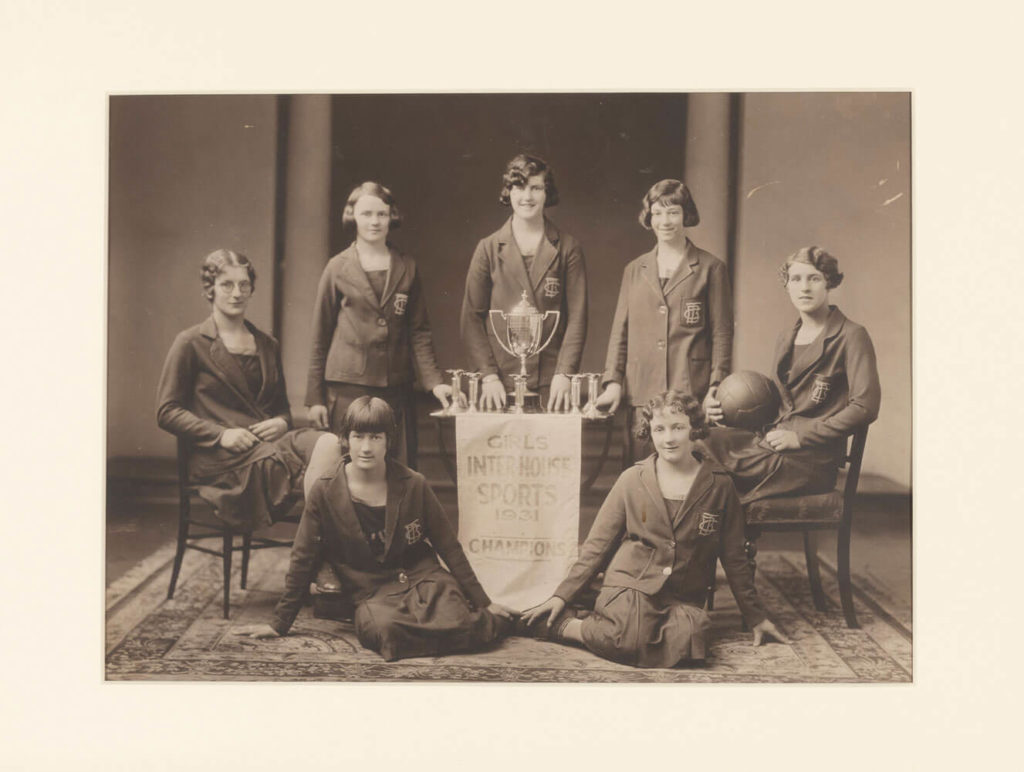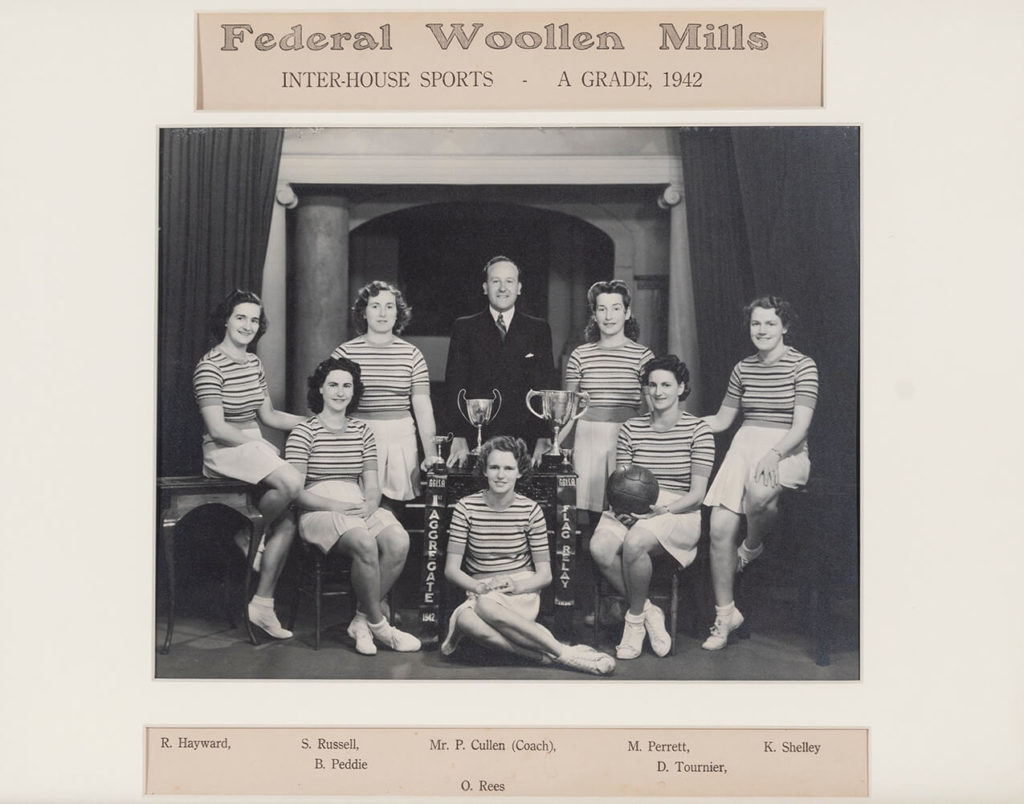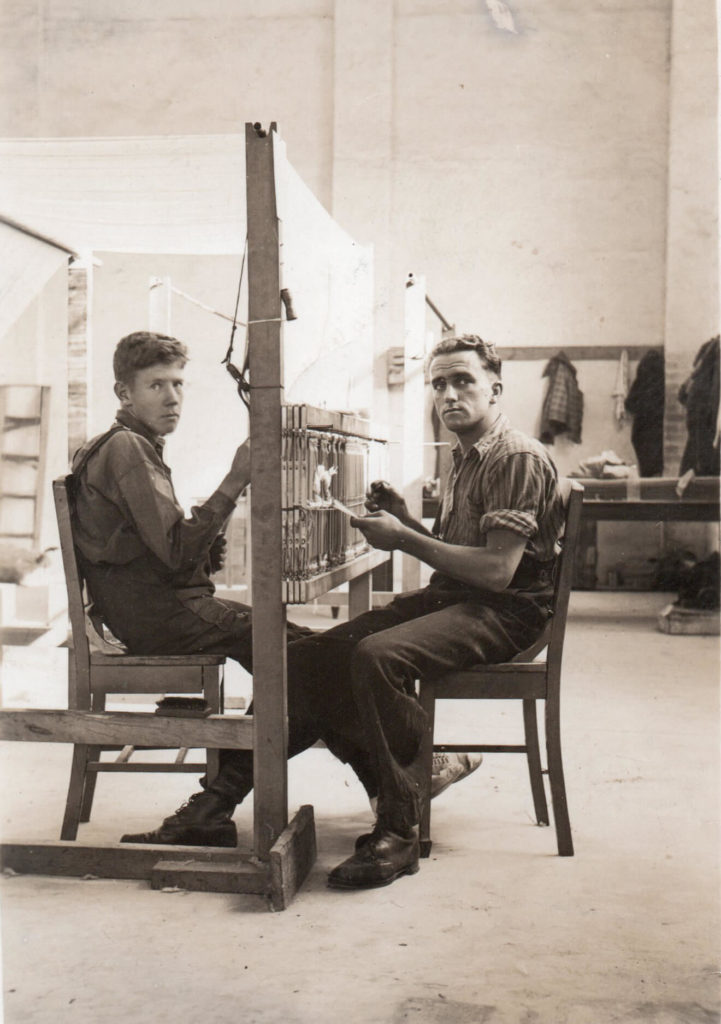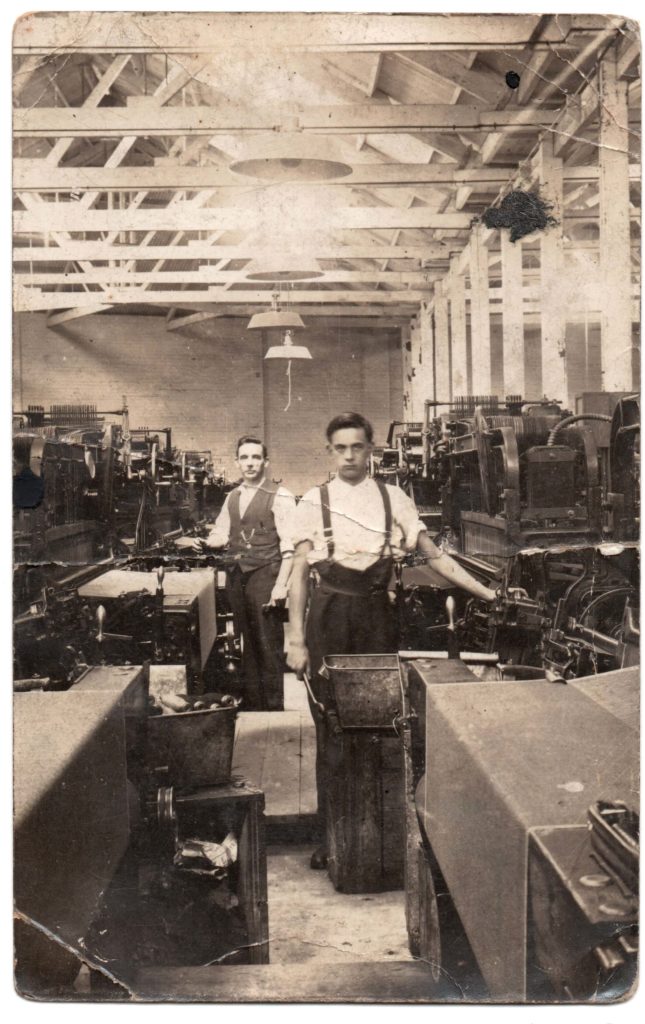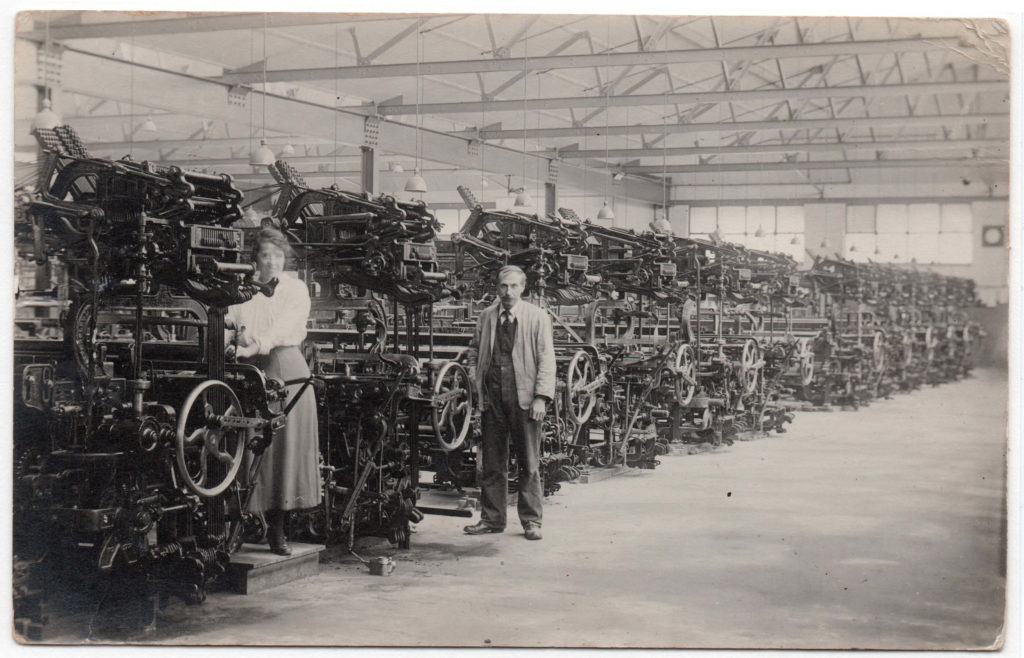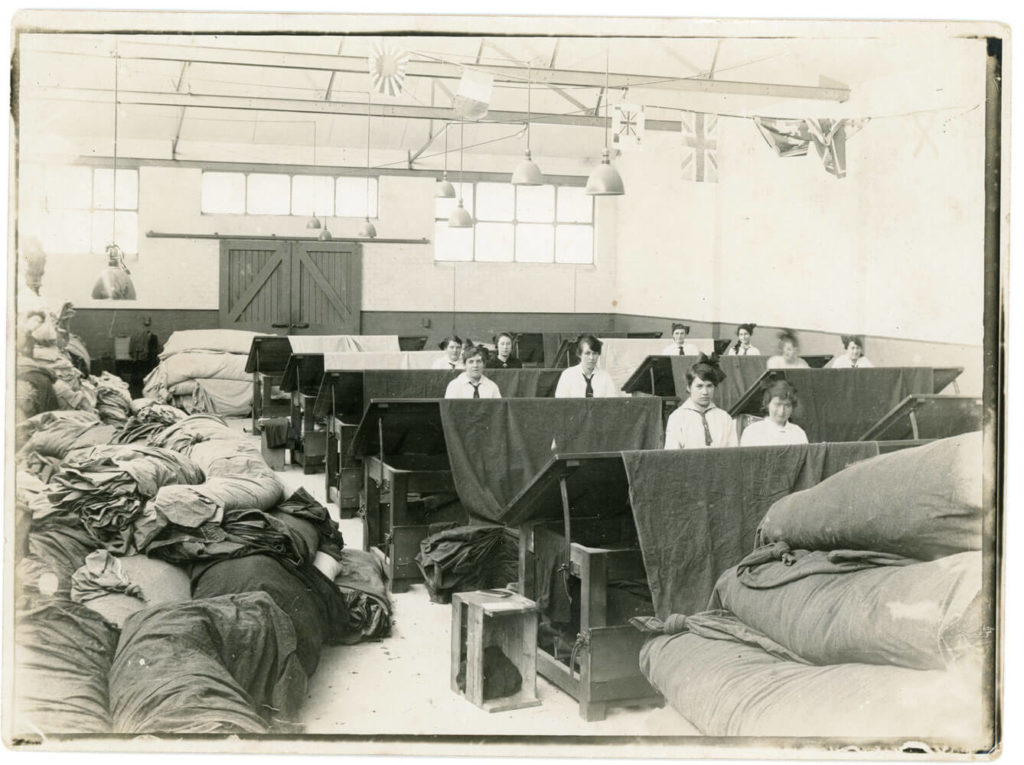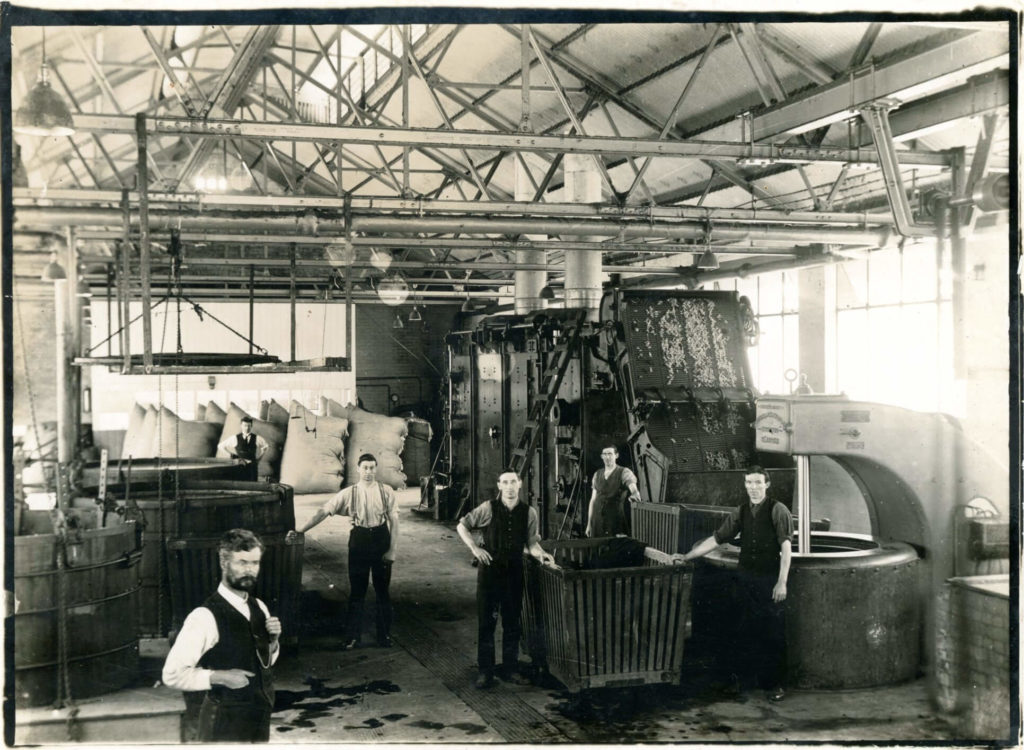Geelong was built on the sheep’s back. While many industries came after it, Geelong largely built its wealth as a strategic location and port town to receive wool from Victoria’s western districts and prepare it for sale to national and international markets.
The landmark Dennys Lascelles Woolstore (1872), now home to the National Wool Museum, was one of the first locations to broker wool sales. A substantial part of the Heritage Collection contains the nationally significant National Wool Museum Collection.
Ceremonial Hunting Grounds
in the You Yangs by Stanley Couzens
Stanley Couzens, a Gunditjmara man and long-time Geelong resident, painted this story upon commission from the Geelong Wool Combing Company. It depicts hunting in the You Yangs, the distinctive granite peaks that overlook the region. In 1993, Couzens’ painting was translated into a pattern by textile designer Jenny McMahon. It was then turned into a jumper using wool sourced entirely from the region. It was fully processed, from fleece to fabric, in Geelong. The jumper was given to attendees at the opening of the Geelong Wool Combing company on 10 December 1993. Among the many guests, was the Prime Minister Paul Keating.
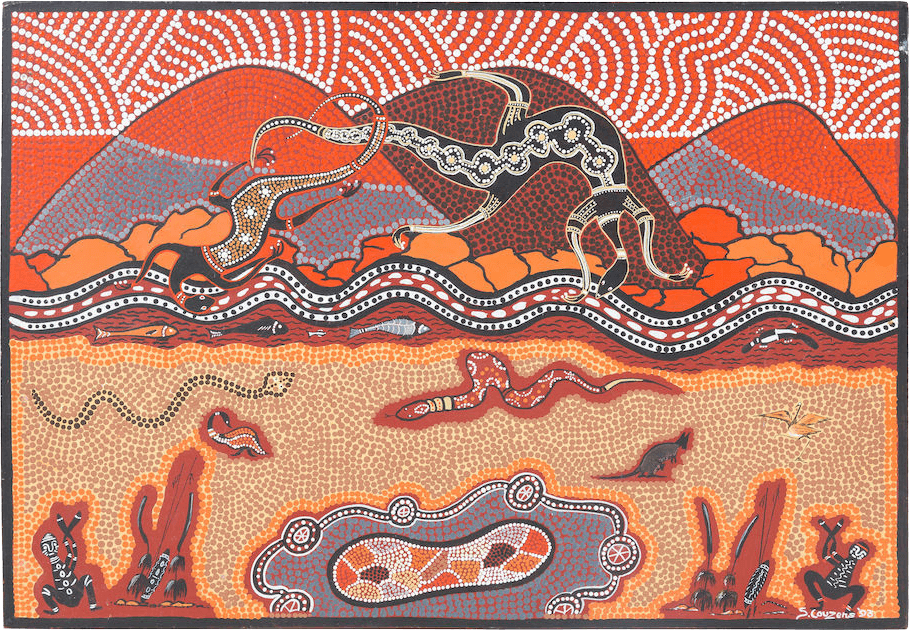
Axminster Loom
The Axminster Carpet Loom was originally built by Brintons in England in 1910 and was later used in their Geelong factory. The loom was in operation until the 1960s and then became a central feature of the National Wool Museum. The loom is known as an Axminster gripper loom. The gripper system was invented by Brintons in 1890 and operates using a gripper shaped like a bird’s beak. This loom also uses a jacquard system for weaving colours. In jacquard weaving, punched cards are used to instruct the loom which colour to use. The system was invented by Joseph Jacquard, a silk weaver from Lyon, and was introduced in 1804. It revolutionised pattern weaving as it had the capacity to create intricate patterns. Charles Babbage was later to adapt Jacquards punch-card system to produce a calculator that was the forerunner of computer programming.
Fragment from MacArthurs first clip
Cloth sample from an opera cloak made in England c1820. Wool for the cloak was clipped from John Macarthur’s merino sheep in 1816. Macarthur is recognised as a pioneer of the wool industry that was to boom in Australia in the early nineteenth century. The British woollen mills were desperate for wool at the time because of the Napoleonic blockade, and the Australian bale sold for a record price. Australia needed a product to sell in European markets which did not perish during long sea-voyages and which offered high value per unit of weight.
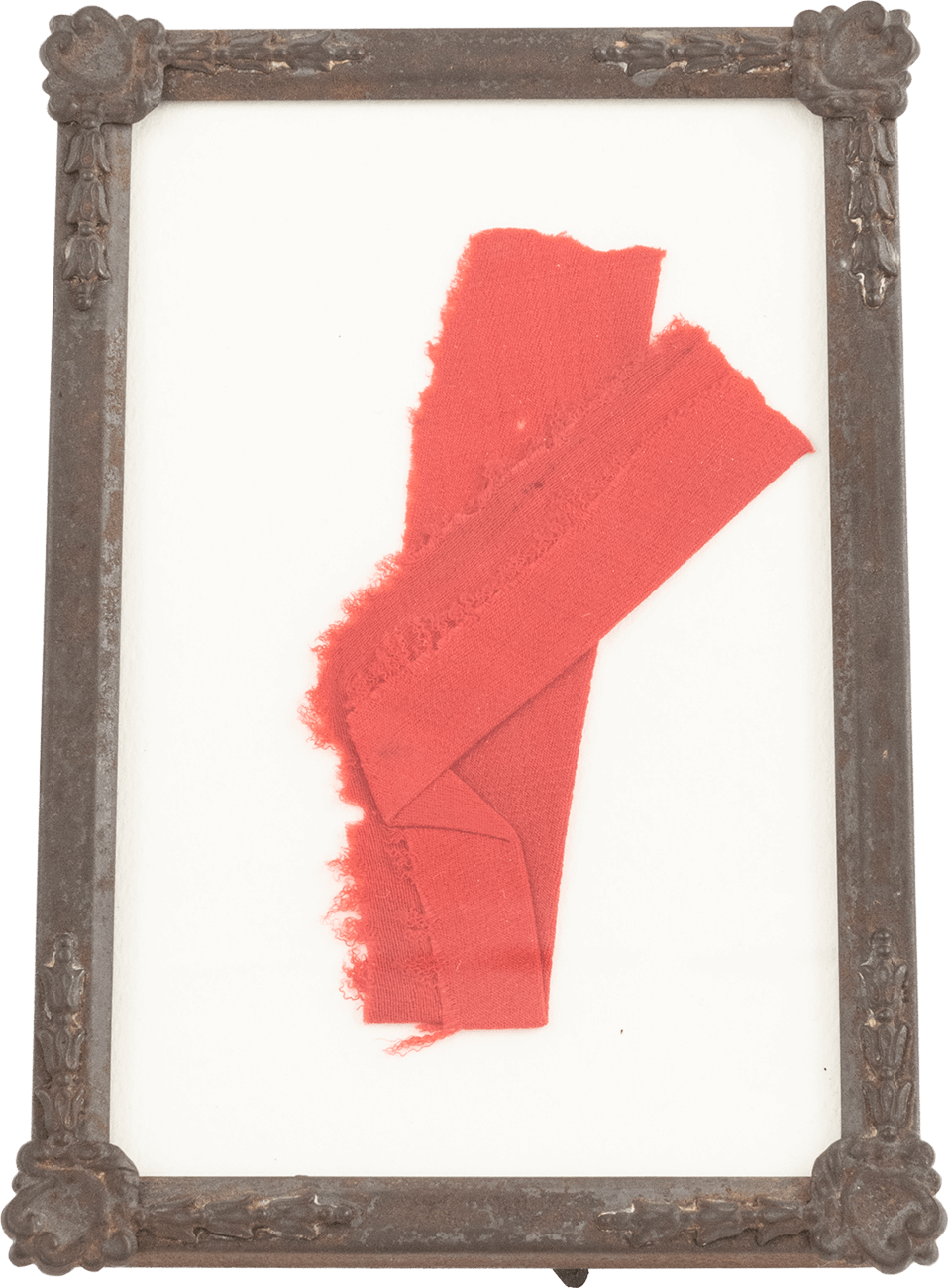
Woollen Textile Fragment
from the Wreck of the Sydney Cove
The Sydney Cove started life as the ship Begum Shaw, she was renamed in 1796 when purchased and used to carry goods to Sydney Cove. She ran ashore on the 9th of February, 1797 on the so named Preservation Island, near Tasmania. She was among the first ships wrecked on the east coast of Australia.
This sample of woven fabric was recovered from the shipwreck nearly 200 years later. It was analysed by the CSRIO as wool with the fibre being rated at 25 microns and weaved in a 2/2 Hopsack structure. This information suggests that it formed part of a coat with an additional fibre identified as hemp also being found on the sample indicating that the jacket would have likely belonged to a member of the crew. The durability of the wool is unquestionable after surviving almost 200 years in the sea floor.
Also of note was the recovery from the shipwreck of the world’s oldest bottle of beer.
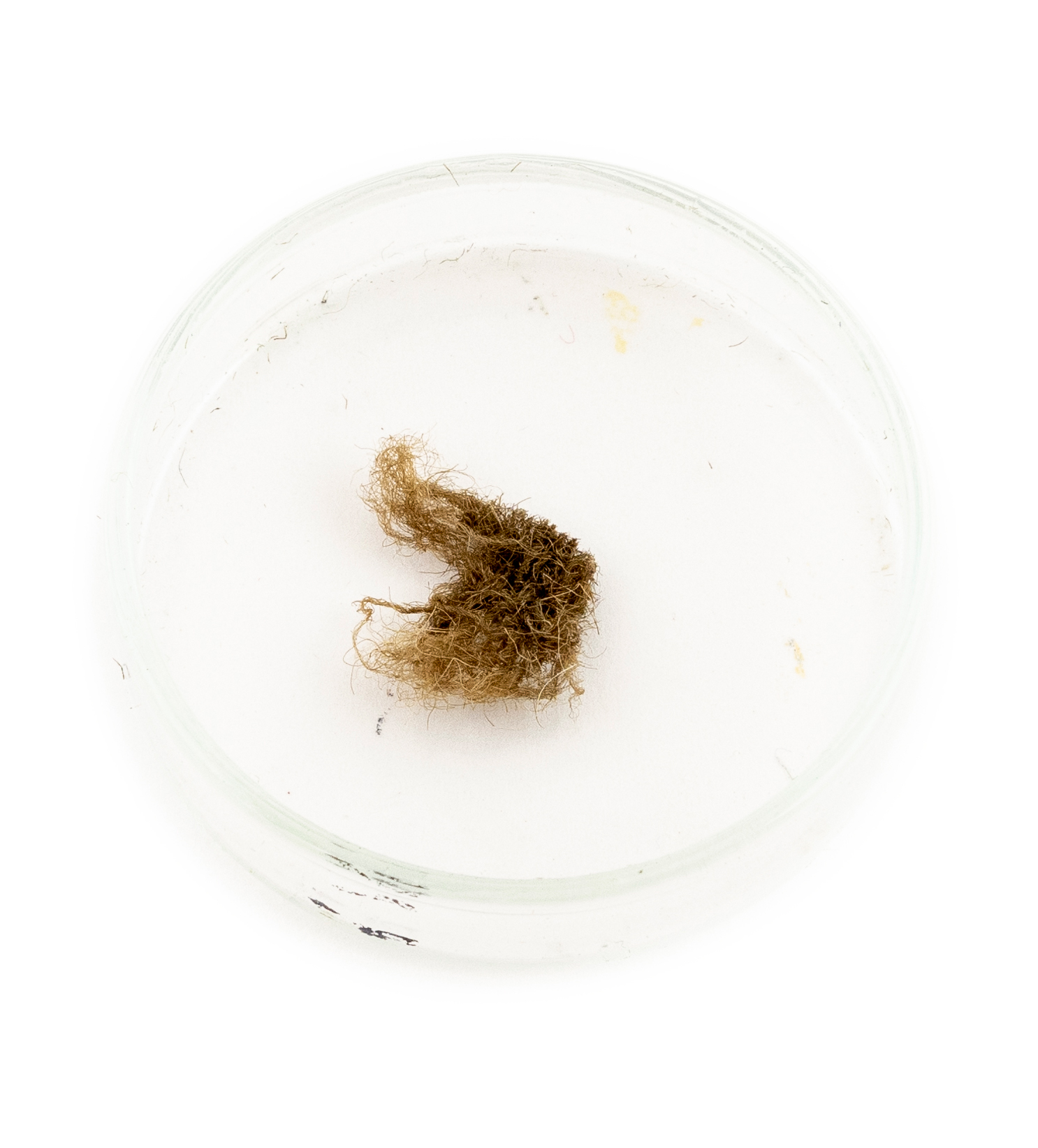
Green Wheat Bag Wagga
This Wagga was made in 1945 in Kyabram, Victoria by Percy Perkins. Perkins was a police officer serving in regional towns in Victoria. He was a keen fisherman and hunter. Family camping trips were spent by the river where everyone slept on stretchers with several army blankets underneath and a wheat bag wagga on top. The green colour of this wagga is from “Dekkol” a preservative which Perkins used to protect his cotton fishing nets from rotting.
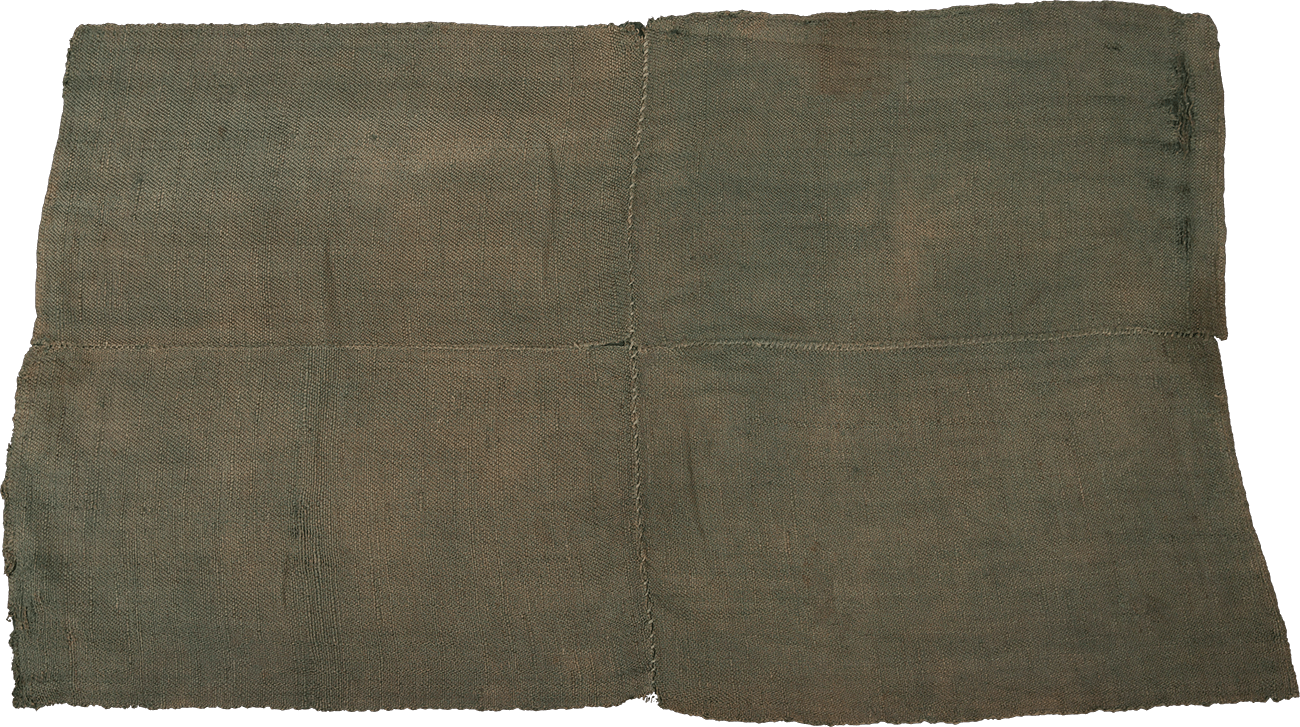
Inter House Athletics Day for Girls
Between the 1920’s and 1950’s the YWCA, Blue Triangle and local committee of representatives organised an Inter House Athletics Day for Girls in Geelong and Melbourne. Local Geelong businesses, such as the surrounding woollen mills, business firms and church clubs formed teams of seven women to compete in a variety of sports, such as bowls, basketball, hockey, cricket and soccer. Events such as these were organised to encourage women to participate in competitive sports and network with other women in the workforce.
Murgatroyd Photography Collection
Fred Murgatroyd studied at Leeds University before moving to Australia and becoming a loom tuner for various woollen mills in Victoria. During this time, he photographed and captured workers and machinery of the Federal Woollen Mills between 1918 and 1920. These photographs showcase the different processes of wool manufacturing during that time.
Fabric Sample Book
Such a book would work as a catalogue of a designer’s previous Mastercards. Mastercards are specification sheets that are sent to mills in order to produce commercial amounts of fabrics for tailoring into final products, such as suits. Keeping a catalogue of previous designs is useful for designers to take inspiration from and for re-releases of iconic designs. Interestingly the sample book was created during the Great Depression, there is a surprising amount of colour with many daring designs.
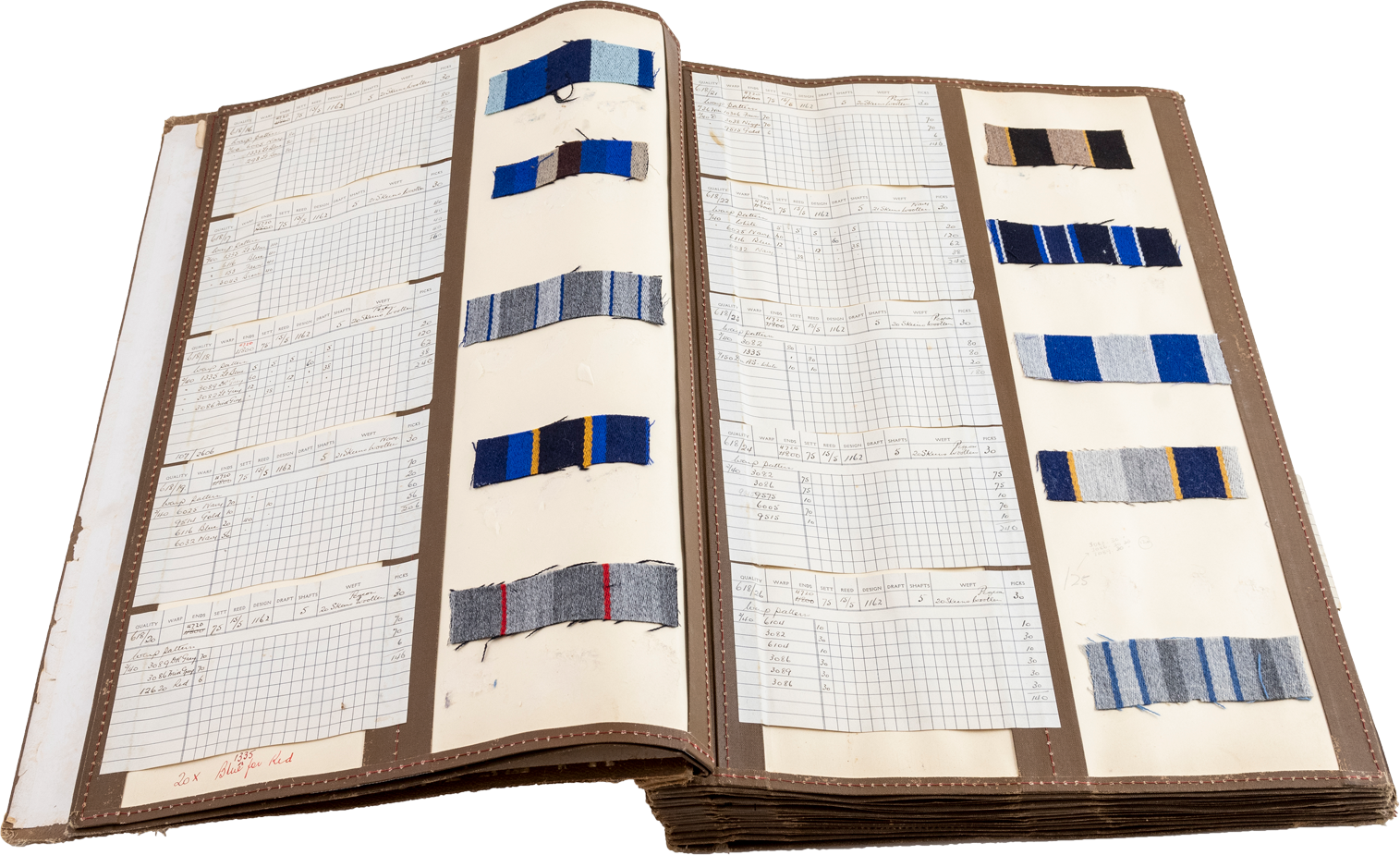
Spinning Wheel
Part of the Zakrzewski Collection of spinning wheels donated to the National Wool Museum by Mr Wlodzimierz Zakrzewski. For many years, Zakrzewski collected, researched and repaired spinning wheels from all over the world. This spinning wheel is from the Nepal/Tibet region. The hole in the crank which holds the stick to turn the wheel is extremely worn, demonstrating its use as a practical item as opposed to being a show piece.
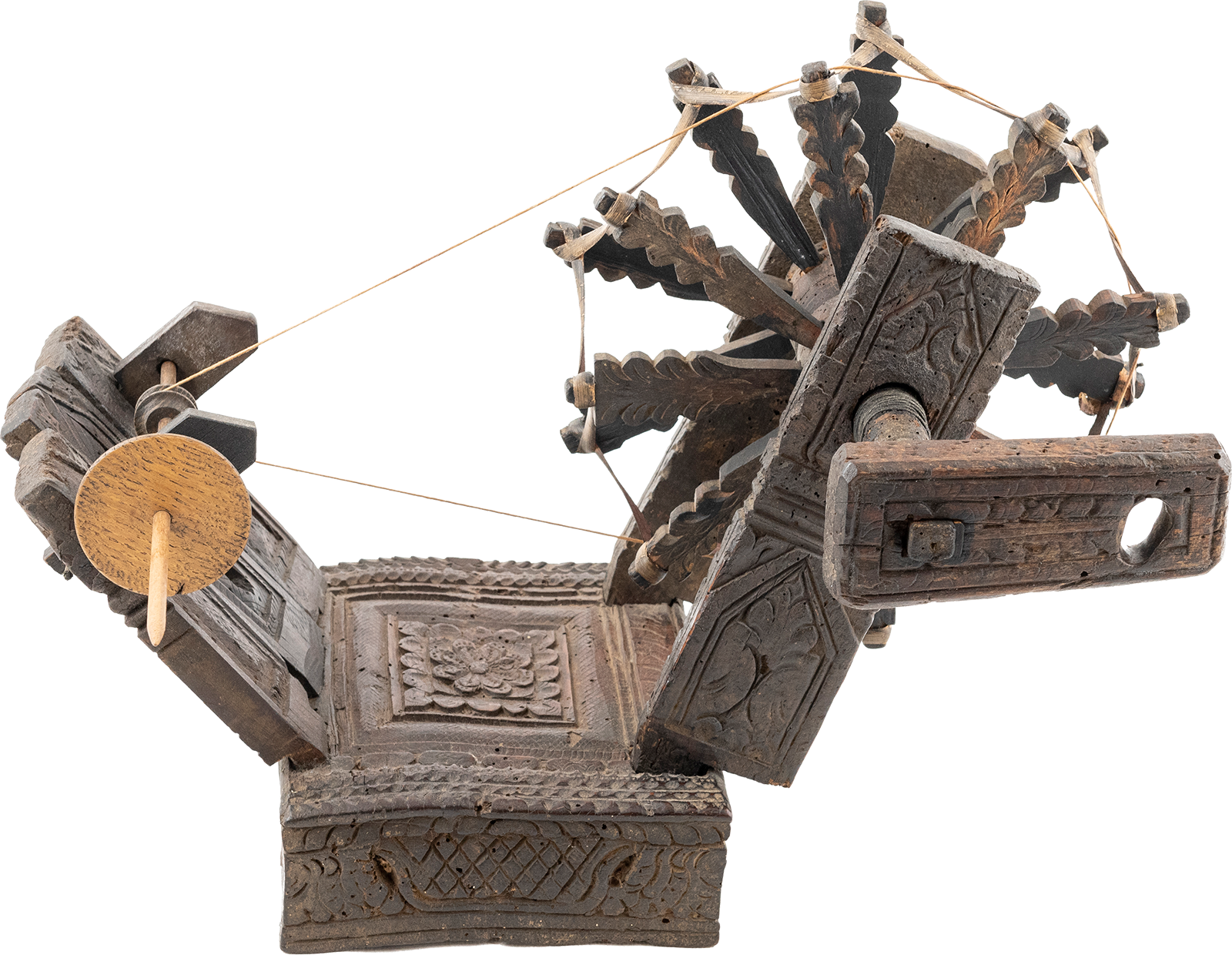
Dressage Quilt
‘Dressage Quilt’ was made by Jan Ross-Manley for the Running Stitch exhibition Wool Quilts Old and New in 1985. The quilt is made from the sashes of winning female participates of Equestrian Sports in Victoria. The central diamond is divided into quarters, one for each woman who won the ribbons. The quilt is about dedication, strength, exertion and achievement.
